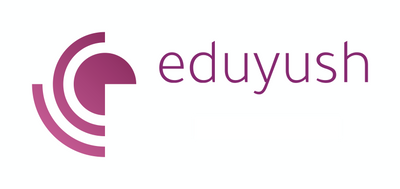40 AI Interview Questions That'll Leave You Thinking: 'What Just Happened?'
Artificial intelligence interview questions
If you're a job seeker looking to stay on the cutting edge of technology, one arena that can't be overlooked is artificial intelligence (AI). As AI continues to become more and more omnipresent in businesses across all industries, so too do interview questions relating to this new field.
Whether seeking a brand-new career or attempting to climb the corporate ladder, preparing yourself with a knowledge of AI might make all the difference. This blog post will provide an overview of some of the critical concepts behind AI and outline potential interview questions related to this emerging field.
We have split the interview questions on the following AI areas
- Introduction to AI
- Applications of AI in finance
- Natural Language processing
- Machine learning
- Ethics and regulation
- Blockchain and AI
- Robotics and AI
- Neural Networks
Introduction to Artificial Intelligence:
Q1: What is Artificial Intelligence (AI)?
A: Artificial Intelligence is the ability of a machine or computer system to perform tasks that would typically require human intelligence, such as learning, problem-solving, and decision-making.
Q2: What are some examples of AI?
A: Some common examples of AI include self-driving cars, virtual assistants like Siri and Alexa, and machine learning algorithms that classify and predict outcomes.
Q3: What is the history of AI?
A: The idea of creating intelligent machines has been around for centuries, but the field of AI as we know it today took shape in the 1950s with the development of early computer programs and the concept of artificial neural networks.
Q4: What is the current state of AI development?
A: AI has made significant progress in recent years, and many AI applications are now being used in various industries. However, there are still many challenges and limitations to overcome, and AI is an active area of research and development.
Ace Your Next Forensic Accountant Interview with These Essential Questions!
Applications of AI in finance:

Q1: How is AI being used in the finance industry?
A: AI is being used in various ways in the finance industry, including in areas such as risk management, trading, and fraud detection. For example, AI algorithms can analyze financial data, identify patterns and trends that may indicate potential risks, or analyze market data and identify trading opportunities. AI can also analyze large amounts of data in real-time to detect potentially fraudulent activity.
Q2. Can you give an example of a case study in AI finance?
A: One example of a case study in AI finance is using machine learning algorithms to improve risk management in investment portfolios. In this case, a financial institution used machine learning algorithms to analyze large amounts of data, including financial statements, market data, and news articles, to identify patterns and trends that could indicate potential risks. By using machine learning to analyze this data in real time, the financial institution was able to identify and mitigate potential risks more effectively, leading to improved risk management and better outcomes for investors.
Q3: Can you give an example of how AI is used in financial risk management?
A: One example of how AI is used in risk management in finance is machine learning algorithms to analyze and predict potential risks in financial portfolios. These algorithms can analyze large amounts of data, including financial statements, market data, and news articles, to identify patterns and trends that may indicate potential risks. For example, a financial institution might use an AI algorithm to analyze a customer's portfolio and identify potential risks based on market conditions or potential risks in a portfolio of mortgage-backed securities based on changes in economic indicators.
Q4: How has AI been used to improve trading in finance?
A: AI has been used to improve trading in finance in various ways, including using algorithms to analyze market data and identify trading opportunities and through machine learning to develop and backtest trading strategies. One example of the use of AI in trading is the development of algorithms that can analyze large amounts of market data in real time and identify patterns and trends that could indicate potential trading opportunities. Traders can use these algorithms to make more informed and timely decisions about when to buy or sell specific financial instruments.
Q5: How is AI being used to detect fraud in finance?
A: AI is being used to detect fraud in finance through machine learning algorithms that are trained to identify patterns and anomalies that may indicate fraudulent activity. These algorithms can analyze large amounts of data in real-time and alert financial institutions to potentially fraudulent activity. For example, an AI algorithm might be used to analyze a customer's transactions and identify patterns or anomalies that could indicate fraudulent activity, such as a sudden increase in the amount of money being transferred or a change in the types of transactions being made.
Q6: Can you give an example of how AI has been used to improve customer experience in finance?
A: One example of how AI has improved customer experience in finance is through chatbots and virtual assistants that can understand and respond to customer inquiries in natural language. These AI-powered chatbots can handle routine customer inquiries and provide quick and accurate responses, freeing customer service representatives to focus on more complex and high-value tasks. By using AI to provide quick and accurate responses to customer inquiries, financial institutions can improve the customer experience and increase customer satisfaction.
Q7: Are there any potential limitations or challenges to using AI in finance?
A: There are several potential limitations and challenges to using AI in finance, including issues around bias and accuracy in algorithms, the need for appropriate regulation and oversight, and concerns about the impact of automation on employment in the finance industry. For example, there is a risk that AI algorithms could be biased if they are trained on datasets that are not representative of the population, leading to unfair or discriminatory outcomes. There is also a risk that AI algorithms could be used to automate decision-making processes in a way that is not transparent or accountable, raising concerns about accountability and oversight. Finally, using AI could lead to job displacement in the finance industry, as some tasks may be automated through AI algorithms.
Get Ahead of the Game - ESG Interview Questions You Need to Know!
Natural language processing in finance:

Q1: How is NLP being used in finance?
A: NLP is being used in finance in a variety of ways, including to analyze and interpret financial documents, news articles, and social media data. For example, NLP algorithms can extract relevant information from financial reports and news articles and summarize it for analysts or analyze social media data to identify sentiment and trends related to specific financial instruments.
Q2: What are some challenges of using NLP in finance?
A: Some challenges of using NLP in finance include the complexity and variability of human language, the need to handle large amounts of data in real-time, and the potential for algorithm bias.
Q3: How can NLP be used to improve financial decision-making?
A: NLP can improve financial decision-making by providing analysts and traders with more accurate and timely information about market conditions and trends. For example, NLP algorithms can analyze and interpret news articles and social media data in real-time, providing investors with valuable insights that may only be visible through traditional methods.
Q4: How is NLP being used to improve customer experience in finance?
A: NLP is used to improve customer experience in finance in various ways, including virtual assistants and chatbots that can understand and respond to customer inquiries in natural language. NLP algorithms can also be used to analyze customer feedback and identify areas for improvement in financial products and services.
Financial Controller Questions: Uncover the Answers to Make Smart Money Moves
Machine Learning in finance

Q1: What is machine learning?
A: Machine learning is a subfield of Artificial Intelligence that involves using algorithms and statistical models to enable a machine to improve its performance on a specific task without being explicitly programmed.
Q2: What are the two main types of machine learning?
A: The two main types of machine learning are supervised and unsupervised. In supervised learning, a machine is trained on a labelled dataset, where the correct output is provided for each example in the dataset. For example, a supervised learning algorithm might be used to classify financial transactions as either fraudulent or legitimate based on a labelled dataset of past transactions that have been labelled as such. In unsupervised learning, a machine is not provided with labelled examples and must find patterns and structures in the data independently. For example, an unsupervised learning algorithm might be used to identify clusters of similar financial transactions without being explicitly told which transactions belong to which cluster.
Q3: How is machine learning being used in finance?
A: Machine learning is being used in finance in a variety of ways, including in risk management, trading, and fraud detection. For example, a machine learning algorithm is used to analyze financial data and identify patterns and trends that indicate potential risks or to analyze market data and identify trading opportunities. Machine learning algorithms can also analyze large amounts of data in real-time to detect fraudulent activity.
Q4: Can you give an example of how machine learning is being used to improve risk management in finance?
A: One example of how machine learning is being used to improve risk management in finance is using algorithms that can analyze large amounts of data, including financial statements, market data, and news articles, to identify patterns and trends that may indicate potential risks. For example, a financial institution might use a machine learning algorithm to analyze a customer's portfolio and identify potential risks based on market conditions or potential risks in a portfolio of mortgage-backed securities based on changes in economic indicators.
Q5: Are there any potential limitations or challenges to using machine learning in finance?
A: There are several potential limitations and challenges to using machine learning in finance, including issues around bias and accuracy in algorithms, the need for appropriate regulation and oversight, and concerns about the impact of automation on employment in the finance industry. For example, there is a risk that machine learning algorithms could be biased if they are trained on datasets that are not representative of the population, leading to unfair or discriminatory outcomes. There is also a risk that machine learning algorithms could be used to automate decision-making processes in a way that is not transparent or accountable, raising concerns about accountability and oversight. Finally, machine learning could lead to job displacement in the finance industry, as some tasks may be automated through machine learning algorithms.
Unleashing the Key to Success: Managerial Round Interview Questions
Ethics and regulation in AI finance

Q1: Why is it important to consider ethics and regulation in using AI in finance?
A: It is important to consider ethics and regulation in the use of AI in finance because AI can have a significant impact on financial decision-making, risk management, and customer experience, and it is essential to ensure that these applications are being used ethically and responsibly. For example, suppose an AI algorithm is used to make financial decisions that are biased or unfair. In that case, it could negatively affect customers and the financial system.
Q2: What are some ethical considerations surrounding the use of AI in finance?
A: Some ethical considerations surrounding the use of AI in finance include issues around bias and fairness in algorithms, the potential impact of automation on employment, and concerns about accountability and transparency in decision-making processes. For example, if an AI algorithm is trained on a biased dataset, it could lead to unfair or discriminatory outcomes when used to make decisions. There is also a risk that the use of AI could lead to job displacement in the finance industry, raising concerns about the impact on employment and the potential need for retraining and support for affected workers. Finally, there is a need for transparency and accountability in using AI in finance to ensure that decisions made by AI are understandable and can be justified.
Q3: What are some regulatory considerations surrounding the use of AI in finance?
A: Some regulatory considerations surrounding the use of AI in finance include the need for appropriate oversight and governance, the requirement to protect customer data privacy, and the need to ensure compliance with relevant laws and regulations. For example, financial institutions using AI should have appropriate governance and oversight mechanisms in place to ensure that the use of AI is consistent with ethical and regulatory requirements. There should also be appropriate safeguards to protect customer data privacy. Financial institutions using AI should ensure that they comply with relevant laws and regulations, such as data protection laws and anti-money laundering regulations.
Q4: How can AI be used ethically in finance?
A: AI can be used ethically in finance by ensuring that algorithms are developed and tested in a transparent and accountable manner and by establishing appropriate governance and oversight mechanisms to ensure that the use of AI is consistent with ethical and regulatory requirements. For example, financial institutions using AI should ensure that algorithms are developed using diverse and representative datasets to minimize the risk of bias and should have processes in place to ensure that algorithms are tested and evaluated for accuracy and fairness. There should also be appropriate governance and oversight mechanisms in place to ensure that the use of AI is consistent with ethical and regulatory requirements. That AI's decisions are transparent and accountable.
Q5: What role do finance professionals play in ensuring the ethical use of AI?
A: Finance professionals play a critical role in ensuring the ethical use of AI by being aware of the ethical and regulatory considerations surrounding the use of AI in finance and by advocating for the responsible and ethical use of AI within their organizations. Finance professionals should be aware of AI's potential risks and limitations and should be proactive in identifying and addressing any ethical or regulatory issues that may arise. They should also be advocates for the responsible and ethical use of AI within their organizations. They should work to ensure that the use of AI is aligned with the values and goals of the organization.
Q6: How can bias be minimized in AI algorithms used in finance?
A: Several steps can be taken to minimize bias in AI algorithms used in finance. One critical step is ensuring that the training data used to develop the algorithm is diverse and representative of the population on which the algorithm will be used. It is also essential to regularly review and evaluate the algorithm for bias and to have processes in place to identify and address any detected biases. In addition, it can be helpful to have a diverse team of individuals involved in developing and testing the algorithm to ensure a range of perspectives is considered.
Q7: How can transparency and accountability be ensured using AI in finance?
A: Several steps can be taken to ensure transparency and accountability in using AI in finance. One essential step is to have clear policies and procedures in place for developing, testing, and using AI algorithms and to ensure that these policies are followed consistently. It is also essential to have mechanisms in place for monitoring and evaluating the performance of AI algorithms and to have processes in place for addressing any issues or concerns that arise. In addition, it can be helpful to have transparency and accountability built into the design of the AI algorithm through the use of explainability techniques or other methods.
Q8: What are some potential risks of using AI in finance?
A: Some potential risks of using AI in finance include the risk of bias and unfairness in algorithms, the risk of job displacement and the need for retraining, and the risk of data privacy breaches. It is essential for financial institutions to be aware of these risks and to have appropriate safeguards in place to mitigate them.
Blockchain and AI in finance

Q1.How is AI being used in conjunction with blockchain technology in finance?
A: AI is being used in conjunction with blockchain technology in finance in a variety of ways, including through the use of smart contracts, decentralized finance (DeFi), and supply chain management.
- Smart contracts are self-executing contracts with the terms of the agreement between buyer and seller being directly written into lines of code. AI can be used to automate the execution of smart contracts and to ensure that they are being executed fairly and transparently.
- Decentralized finance (DeFi) uses blockchain technology to enable financial transactions and services without intermediaries.AI can automate and optimize these transactions and services and ensure that they are executed fairly and transparently.
- Finally, AI can be used with blockchain technology to improve supply chain management by enabling real-time tracking and traceability of goods and automating and optimizing supply chain processes.
Q2. What are the benefits of using blockchain and AI in finance?
A: The benefits of using blockchain and AI in finance include improved transparency, security, and efficiency. Using blockchain technology, financial transactions can be recorded securely and transparently, enabling all parties to have confidence in the accuracy and integrity of the transaction record. By using AI to automate and optimize financial transactions and services, financial institutions can improve efficiency and reduce costs.
Q3. What are the challenges and limitations of using blockchain and AI in finance?
A: Some of the challenges and limitations to using blockchain and AI in finance include
- the need for appropriate regulation and oversight,
- the risk of technical issues or failures,
- and concerns about the impact on employment in the finance industry.
There is a need for appropriate regulation and oversight of the use of blockchain and AI in finance to ensure that they are used ethically and responsibly. There is also a risk of technical issues or failures that could impact the reliability and security of financial transactions and services. Finally, there is a risk that the use of blockchain and AI could lead to job displacement in the finance industry, raising concerns about the impact on employment and the potential need for retraining and support for affected workers.
Q4. Can you give an example of a case study in which blockchain and AI are being used in finance?
A: One example of a case study in which blockchain and AI are being used in finance is using smart contracts and AI to automate the underwriting process for insurance contracts. In this case, a financial institution uses AI algorithms to analyze large amounts of data, including financial statements, medical records, and other data, to underwrite insurance contracts automatically. By automating the underwriting process this way, the financial institution can improve efficiency and reduce costs while ensuring that the underwriting process is fair and transparent.
Cracking the Code: Essential Blockchain Interview Questions to Ace Your Next Interview
Robotics and AI in finance

Q1: How is AI being used in conjunction with robotics in finance?
A: AI is being used in conjunction with robotics in finance in various ways, including through the automation of back office tasks and customer service and the use of robots for tasks such as data entry and processing. For example, a financial institution might use a robot to automatically process large amounts of data, such as financial statements or customer records, freeing human employees to focus on more complex tasks. In addition, AI can enable robots to understand and respond to customer inquiries in natural language, improving the customer experience.
Q2: What are the benefits of using robotics and AI in finance?
A: The benefits of using robotics and AI in finance include improved efficiency, accuracy, and speed. By automating routine tasks, financial institutions can reduce costs and improve efficiency. In addition, AI algorithms can be more accurate and faster than humans at data processing and analysis tasks, leading to improved decision-making and risk management.
Q3: What are the challenges and limitations of using robotics and AI in finance?
A: Some of the challenges and limitations to the use of robotics and AI in finance include
- the risk of job displacement, t
- he needs appropriate regulation and oversight,
- and concerns about the impact on the customer experience.
There is a risk that the use of robotics and AI could lead to job displacement in the finance industry, raising concerns about the impact on employment and the potential need for retraining and support for affected workers. There is also a need for appropriate regulation and oversight of the use of robotics and AI in finance to ensure that they are used ethically and responsibly. Finally, there is a risk that the use of robotics and AI could negatively impact the customer experience if they are not implemented and managed correctly.
Q4: How can the impact of robotics and AI on employment in the finance industry be managed?
A: The impact of robotics and AI on employment in the finance industry can be managed through a combination of retraining and upskilling programs for affected workers and the development of policies and procedures to ensure that the adoption of robotics and AI is done ethically and responsibly.
For example, a financial institution might offer retraining and upskilling programs to help workers transition to new roles or industries if their jobs are automated. In addition, the financial institution could develop policies and procedures to ensure that the adoption of robotics and AI is done in a way that considers the impact on employment and provides support for affected workers.
Essential US GAAP Interview Questions to Ace
Neural networks in finance

Q1: What are neural networks, and how do they work?
A: Neural networks are a type of machine learning algorithm inspired by the structure of the human brain. They are composed of interconnected "neurons" that process and transmit information and are designed to learn and adapt based on the data they are trained on. Neural networks can be used for various tasks, including classification, regression, and prediction. In finance, neural networks are used to analyze large amounts of data, such as financial statements or market data, to identify patterns and trends that indicate potential risks or opportunities.
Q2: How are neural networks used in risk management in finance?
A: Neural networks can be used in risk management in finance by enabling financial institutions to analyze large amounts of data, including financial statements, market data, and news articles, to identify patterns and trends that could indicate potential risks. For example, a financial institution might use a neural network to analyze a customer's portfolio and identify potential risks based on market conditions or potential risks in a portfolio of mortgage-backed securities based on changes in economic indicators. Financial institutions can more effectively identify and mitigate potential risks by using neural networks to analyze this data in real time.
Q3: Can you give an example of how neural networks are used in fraud detection in finance?
A: Neural networks can be used in fraud detection in finance by analyzing large amounts of data, such as customer transactions or account activity, to identify patterns or anomalies that could indicate fraudulent activity. For example, a financial institution might use a neural network to analyze customer transactions in real time and identify patterns or anomalies that could indicate fraudulent activity, such as a sudden increase in the amount of money being transferred or a change in the types of transactions being made. These neural networks can help financial institutions detect and prevent fraudulent activity more effectively by analyzing large amounts of real-time data.
Q4: What potential limitations or challenges to using neural networks in finance?
A: Some potential limitations or challenges to the use of neural networks in finance include the need for large amounts of high-quality data to train the algorithms, the risk of overfitting (when the algorithm performs well on the training data but poorly on new data), and the need for appropriate regulation and oversight. Neural networks require large amounts of high-quality data to be effective. If the data is not representative or is of low quality, the algorithm's results may be biased or inaccurate. There is also a risk of overfitting, where the algorithm performs well on the training data but poorly on new data, leading to inaccurate predictions.
Can You Ace These IFRS Interview Questions? Let's Find Out!
Summing up
With AI playing an increasingly important role in businesses across all industries, those seeking new opportunities or looking to move up the corporate ladder would be wise to brush up on their knowledge of this field.
The questions outlined above are just a few examples of what you might encounter during your next job interview; by familiarizing yourself with the key concepts behind AI, you'll put yourself in a much better position to ace the interview and land the job you want. For more interview-related blog posts and content, be sure to check out our other articles.
Interview Questions? Answers.
- Accounting Interview questions and answers
- Accounts receivable interview questions
- Accounts payable interview questions
- ESG Interview questions
- Forensic accountant interview questions
- Financial controller interview questions
- GST interview questions
- IFRS interview questions and answers
- IFRS 15 interview questions and answers
- IFRS 17 Interview Questions and answers
- IFRS 9 Interview Questions and Answers
- IFRS 16 Interview Questions and answers
- Managerial round interview questions and answers
- Blockchain interview questions for finance professionals
It's important to dress professionally for an interview. This usually means wearing a suit or dress pants and a button-down shirt for men, and a suit or a dress for women. Avoid wearing too much perfume or cologne, and make sure your clothes are clean and well-maintained.
It's best to arrive at least 15 minutes early for the interview. This allows you time to gather your thoughts and compose yourself before the interview begins. Arriving too early can also be disruptive, so it's best to arrive at the designated time or a few minutes early.
It's a good idea to bring a few key items to an interview to help you prepare and make a good impression. These might include:
- A copy of your resume and any other relevant documents, such as references or writing samples.
- A portfolio or sample of your work, if applicable.
- A list of questions to ask the interviewer.
- A notebook and pen to take notes.
- Directions to the interview location and contact information for the interviewer, in case you get lost or there is a delay.
t's generally not appropriate to bring a friend or family member to an interview, unless they have been specifically invited or are necessary for accommodation purposes.
If you are running late for an interview, it's important to let the interviewer know as soon as possible. You can try calling or emailing to let them know that you are running behind and to give an estimated arrival time.
If possible, try to give them a good reason for the delay, such as unexpected traffic or a last-minute change in your schedule. It's also a good idea to apologize for the inconvenience and to thank them for their understanding.
- It's generally a good idea to address the interviewer by their professional title and last name, unless they specify otherwise. For example, you could say "Mr./Ms. Smith" or "Dr. Jones."
Yes, it's perfectly acceptable to ask about the company's culture and benefits during the interview. In fact, it's often a good idea to ask about these things to get a better sense of whether the company is a good fit for you. Just make sure to keep the focus on the interview and not get too far off track.
It's okay to admit that you don't know the answer to a question. You can try to respond by saying something like: "I'm not sure about that specific answer, but I am familiar with the general topic and would be happy to do some research and get back to you with more information."
Alternatively, you can try to answer the question by using your own experiences or knowledge to provide context or a related example.
It's generally best to wait until you have received a job offer before discussing salary and benefits.
If the interviewer brings up the topic, you can respond by saying something like: "I'm open to discussing salary and benefits once we have established that we are a good fit for each other. Can you tell me more about the overall compensation package for this position?"
It's important to remember that employers are not allowed to ask questions that discriminate on the basis of race, religion, national origin, age, disability, sexual orientation, or other protected characteristics. If you are asked an illegal question, you can try to redirect the conversation back to your qualifications and skills for the job.
For example, you might say something like: "I'm not comfortable answering that question, but I am excited to talk more about my skills and experiences that make me a strong fit for this position."
It's okay to admit that you don't understand a question and to ask for clarification. You can try saying something like: "I'm sorry, I'm not sure I fully understand the question. Could you please clarify or provide some more context?"
At the end of the interview, thank the interviewer for their time and express your interest in the position. You can also ask about the next steps in the hiring process and when you can expect to hear back. Finally, shake the interviewer's hand and make sure to follow up with a thank-you note or email after the interview.











Leave a comment